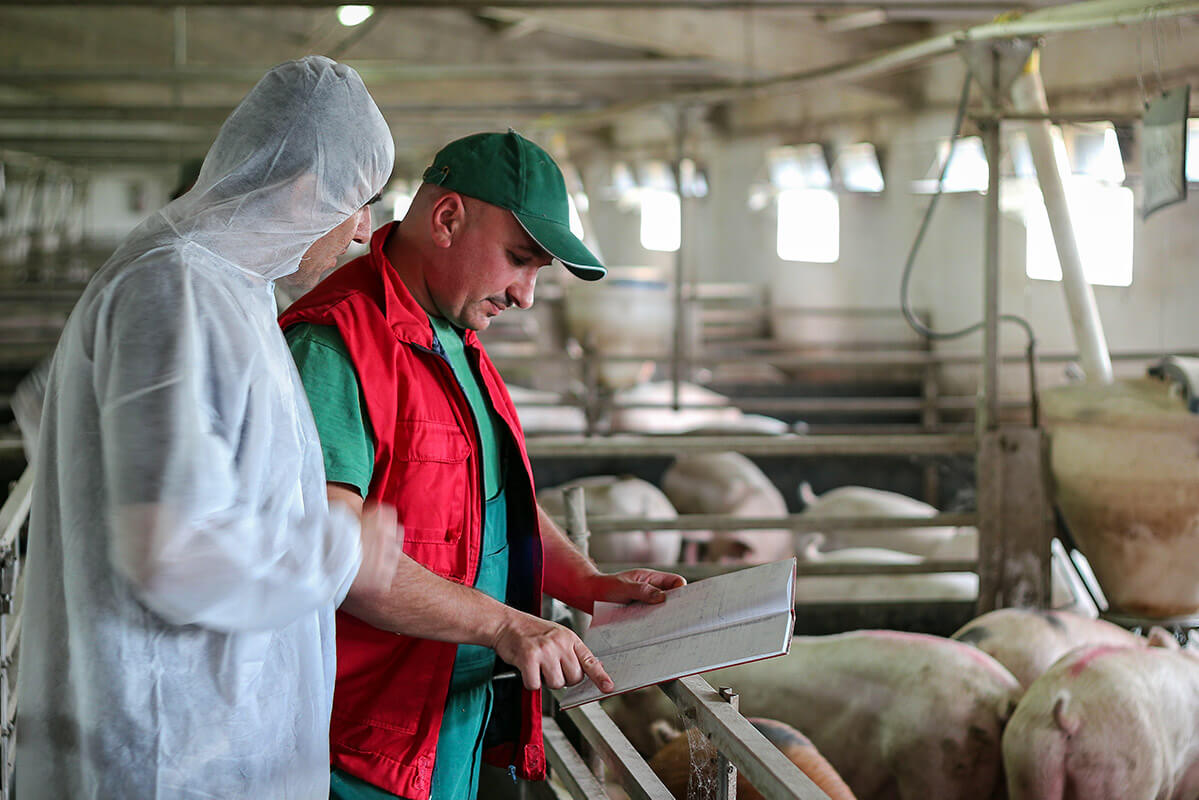Section 3 | Proper Handling, Storage, and Use of Livestock Medicines
Page 15 /
Storage and Handling of Livestock Medicines
The handling and storage of livestock medicines can affect how well the product works. The manufacturer of the product will provide information regarding the storage and handling on the label. Specifically, it is important to check the label for instructions on:
1. Temperature
Having the product stored at an inappropriate temperature can have adverse effects on the medicine.
- High storage temperature:
- Leads to chemical decomposition
- Shortens the shelf life of the product
- Low storage temperature:
- May lead to more viscous solutions, which affects absorption of the product
Proper temperature is especially important for vaccines. This is to prevent them from freezing and becoming inactive; modified-live vaccines that are exposed to high temperature will become inactive.
2. Effects of Chemicals and Mixing
When some drugs are mixed together, they can have altered activity or potency. Hence, it is extremely important to always use clean syringes and dispensers without chemical residues. Some products may also settle out of suspension and need to be shaken prior to drawing the medicine into a syringe. The label will contain the warning ‘shake well before using’.
3. Light
Many livestock medicine products are light-sensitive. In certain products, light exposure can cause color change and/or decomposition of the product leading to a loss of effectiveness. To determine what products are light sensitive, consult the label for a warning statement. Light sensitive products, such as tetracycline antimicrobials, will typically be packaged in brown glass bottles or protective cartons to shield from the light.
4. Expiry Dates
Expiry dates are the dates before the product must be used to ensure efficacy, however, if the product is improperly stored, the shelf life and potency could be shortened. The expiry date is found on the label of the product.
5. Fire Precautions
Some products contain components that may present a risk of fire or explosion. It is important for human and animal safety to follow instructions on the label to the reduce risk of injury. Also ensure that a fire extinguisher is nearby and accessible.
6. Ventilation
Specific products will have warnings on their labels such as ‘use only in well-ventilated areas or outdoors’ and ‘close the container when not in use’. These agents may present inhalation injury. It is important to have adequate ventilation in place where these products are stored.
7. Drug Storage Units
In the location where drugs are stored, it is important to consider the product’s sensitivity to light, temperature, moisture, need for fire security, and adequate ventilation. Multiple storage units may be necessary to not only meet the product demands for storage, but also allow for the systematic organization of the medicine to reduce the risk of treatment errors. For example, on a dairy farm, some products used in calves are not on-label for lactating dairy cows, and having the products in different locations will reduce the risk of inappropriate treatment.
It is also important to ensure that the storage location is clean, dry, lockable, and inaccessible to children, animals, and insects.
8. Transportation
As many products are sensitive to a wide variety of conditions, it is important to ensure appropriate storage conditions are met when the product is being transported.
Disposal
Safe disposal of livestock medicines will help to protect humans, animals, and the environment from accidental exposure to potential hazards. The product label will often contain information on disposal. If in doubt, contact the manufacturer of the product or your local waste disposal authority.
Disposal Sites
Sites and ways to dispose of livestock medicines include:
- Return expired and unused product to the supplier
- Take empty containers to municipal landfills on household hazardous waste days
- Speak to your veterinarian about disposal options
Biomedical Waste
Biomedical waste has the potential to cause injury or disease during handling for disposal.
Examples of biomedical waste include:
- Needles, syringes, blades, or other items that can cut or puncture
- Typically referred to as sharps
- Vaccines (live and killed)
- Bandages or other items soaked with blood, serum, pus, urine, or other bodily fluids
- Tissues, carcasses, body fluids, and blood from animals infected with diseases communicable to humans
- Cultures of bacteria or fungi

Some guidelines for handling biomedical waste disposal include:
- Educate staff about safe handling procedures
- Segregate biomedical waste from regular waste at the point of origin
- Do not throw biomedical waste into regular garbage and separate out later
- Color code or clearly mark waste containers
- Minimize transfer to other containers or handling
- Make containers for storing sharp objects (e.g. needles) sturdy and puncture proof
- Put a lid on the container and never fill more than ¾ full
For employers, prevention of unnecessary exposure to hazardous materials including needles and scalpel blades are the duty of every employer. Thus, ensuring proper health and safety training is essential to minimize risk.
Although regulations vary depending on local municipalities, contact your veterinarian to determine the appropriate method for disposal of biomedical waste.







